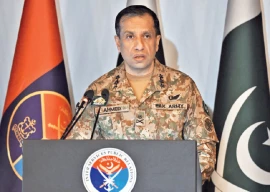
These figures do not include the many disappearances of children that are not reported by their families. There is also no data on how many children go missing across the country, which makes the safety and security of children in Pakistan a grave issue, it was also reported.
“Our research reveals that Pakistan does not have any national or provincial data on missing children, let alone proper guidelines to investigate such cases,” said Roshni Helpline president Muhammad Ali.
“We visited a hundred police stations across the city over a period of several months, where it was revealed that 2,582 complaints were registered in 2009. I am sure the national figures would be even higher,” he added.
Out of the 2,582 missing children, 2,319 were boys and 263 were girls. Around 78 per cent of the missing children belonged to the age group of 12 years to 18 years while the remaining 22 per cent were younger than 12 years. Around 34 per cent of the missing children were studying at both formal schools and madrassas while 30 per cent were studying only at madrassas and 36 per cent were dropouts from schools or madrassas.
The main reasons why children run away from their homes are physical, sexual and emotional abuse at home and at school as well as economic and financial constraints faced by their families. Around 80 per cent of the children who run away belong to the middle or lower socio-economic structure of society. This can be gauged by the fact that most disappearances have been reported from the mid- or low-income areas of Karachi, such as Korangi Town, Landhi Town, Orangi Town, Baldia Town and Lyari Town, the NGO revealed.
According to Ali, not all children who go missing are runaways. Sometimes, they are children who have walked too far away from their residential areas while playing and cannot find their way back home, he said, adding that these wandering children are an easy prey for the begging or child trafficking mafia if timely measures are not taken to find them.
In low-income neighborhoods, parents initially ask their mosques to make announcements regarding disappearances. They also distribute pamphlets or advertise in newspapers. After waiting for a few days, they approach the police, who only record the preliminary information provided by the parents of the missing child, Ali said.
The government needs to “own this issue” and take some responsibility to tackle it effectively by compelling the police to register FIRs and taking up investigations on a priority basis, he added.
Almost 30,000 children out of the 0.15 million children in Pakistan who are currently living on the streets are in Karachi alone, said Initiator Human Development Foundation (IHDF) president Rana Asif Habib.
Meanwhile, 0.8 million children are being employed as bonded labour, said Habib, whose NGO has been working for the protection of street children for the last 15 years.
According to the report issued by the International Labour Organisation, the infant mortality rate in Pakistan is 78/1,000, while there are almost 3.3 million children working in Pakistan’s “formal sector”, said Habib, lamenting that, “while there are banking courts in Pakistan, there are none for the rights of children”.
According to the report “The State of Pakistan’s Children” which was published by the Society for the Protection of the Rights of the Child (SPARC) in June 2010, Pakistan is not doing enough to protect its children. Every year, 400,000 children die before they turn five, while one-third of these deaths take place among the children who are in their first year of life.
with additional input from ppi
Published in The Express Tribune, November 20th, 2010.
1735365305-0/Untitled-(3)1735365305-0-405x300.webp)
1735363887-0/Untitled-(2)1735363887-0-165x106.webp)
1735362150-0/Untitled-(1)1735362150-0-165x106.webp)





1712042246-5/WhatsApp-Image-2024-04-02-at-10-12-34-AM-(1)1712042246-5-270x192.webp)


1735283394-0/sidra--(9)1735283394-0-270x192.webp)




1720030784-0/Smog-free-Lahore-(14)1720030784-0-270x192.webp)






COMMENTS
Comments are moderated and generally will be posted if they are on-topic and not abusive.
For more information, please see our Comments FAQ